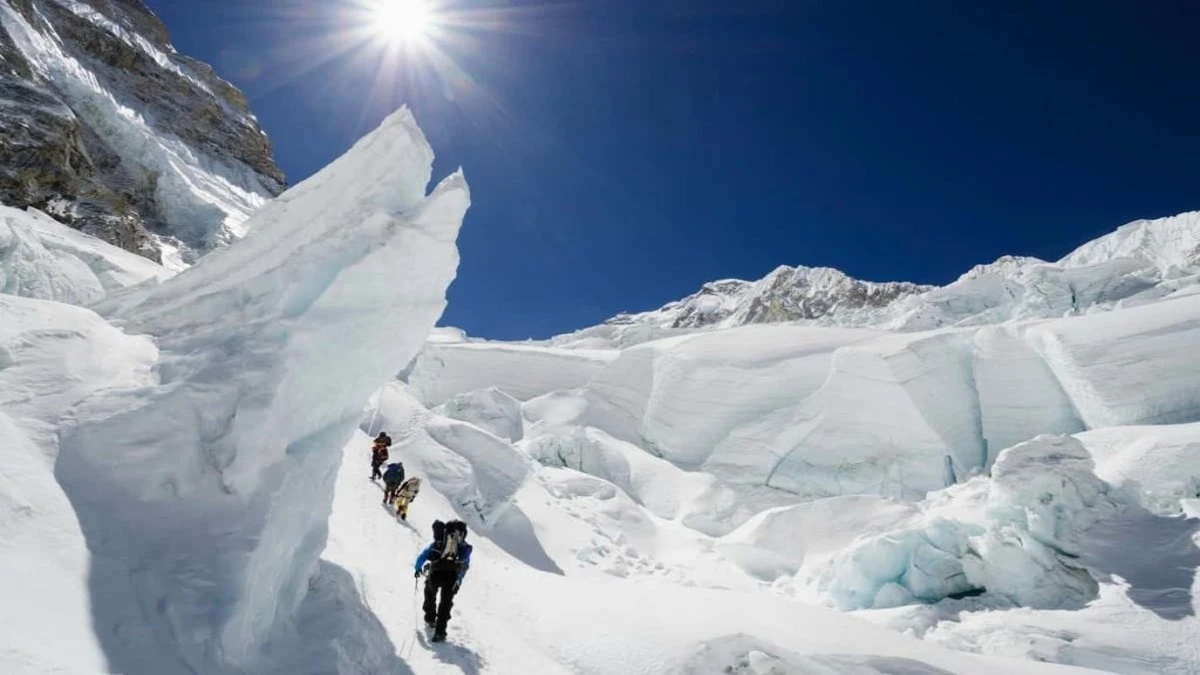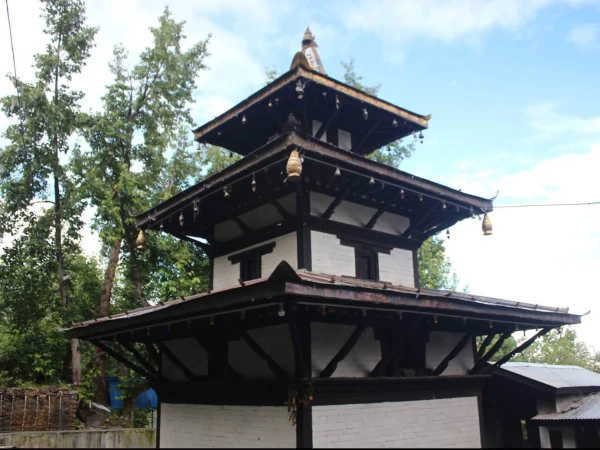A melting river of ice that shifts slowly each year. Being the Glacier in the highest altitude, Khumbu Icefall is the first obstacle climbers face when they ascend to the Everest summit. And some other amazing properties that Khumbu Glacier has is that, unlike other glaciers, it moves slowly.
Once it leaves Lhotse, the glacier defines the Western Cwm for about 2 miles before dropping rapidly to create the Khumbu Icefall for 2.5 miles. And for a fact, that Khumbu Icefall is the root juice of different mountains. Around Everest Base Camp (EBC), the glacier makes a sharp southernly bend and continues another 6 miles/9.6km to 16,000’/4,900m. The Icefall varies in width from over half a mile/800m to a third of a mile/500m.
Khumbu Icefall bodies
The first obstacle to reach Everest’s summit is the Khumbu Icefall one faces after having taken down many lives unimaginable. On considerable thought, nearly about 300 climbers have been the victim of this deadly icefall. And still, to the date, the dead bodies of some climbers emerge randomly.
Because of global warming, the ice sheet and glaciers are melting fast and the dead bodies that remained buried all these years are now becoming exposed.
The global warming has reduced the melting rate of Khumbu Glacier of upper part that falls from Mt. Everest is falling slower than any other glacier. But on the other hand, the lower part of the glacier that lies near the Base Camp has been thinner and easier. From the photos that have been captured from above of Everest.
The exposure of the dead bodies at Khumbu Glacier or in the Everest was a topic of controversy for some environmentalists. The officials with the Expendations with the Operators Association of Nepal (EOAN) tried their best to bring down the ropes from Mount Lhotse during the climbing season of 2019. However, bringing the dead bodies down was not so easy. The bodies weigh 10 times heavier than the normal body weight. And at that altitude, it's something off the roof.
The government officials under the Nepal Government also need to prioritize this problem. “This issue needs to be prioritized by both the government and the mountaineering industry,” said Dambar Parajuli, president of EOAN.
There was even a discussion about, if the Tibetian Government can handle the dead bodies why not the Government of Nepal. Defending the statement the Sherpa community even glared with their courageous hearts.
“If they can do this on the Tibet side of Everest, we can do it here as well.”
But like always, this plan never came to an end. But however, the number of dead bodies to appear in Everest has been minimized.
The Khumbu Fall collects the dead bodies of Everest. Mountaineers who have died recently are said to have fallen in the Icefall. And in recent years, most dead bodies are surfacing at the Icefall.
Removing a dead body can cost up to $80,000 (£61,000). A study in 2015 revealed that ponds on the Khumbu glacier, which are crossed by climbers as they attempt to reach the summit, were expanding and joining up because of accelerated melting.
Because of the following consequences that Khumbu Icefall has been facing in recent years. A group of researchers including members from Leeds and Aberystwyth universities in the UK went and studied the temperature of the glacier. When they drilled the Khumbu Glacier, the result was that the ice was warmer than the expected temperature. As a result, the melting of Khumbu Glacier is accelerating.
Exploring New Routes to Avoid the Khumbu Icefall
There have been few to no studies exploring an alternative route to scale the mighty Everest while avoiding the dangers of the Khumbu Icefall. However, in November 2021, a seven-member team led by French alpinist Marc Batard and Pasang Nuru Sherpa discovered a new route that detours around the treacherous Khumbu Icefall.
“This route is much safer. The rocky path is tough to walk on, but it’s a lot better than going through the Icefall, and honestly, it’s not that hard to handle,” said Pasang Nuru Sherpa.
The route starts in Gorakshep, a town at 5,100 meters, and begins on a nearby peak now named 'Sundari Peak' (5,880 meters) and the 'Sundari Route' in tribute to Sundari Sherpa, a former climbing partner who inspired Batard’s record-breaking 24-hour Everest ascent. From here, the path ascends to Camp 1 at 6,065 meters, bypassing the dangers of the Khumbu Icefall entirely.
Khumbu Icefall Avalanches
Mount Everest is full of surprises, especially when it comes to the weather. The unpredictable conditions can make climbing even more challenging than it already is. Among the many challenges Everest presents, the Khumbu Icefall stands out as one of the most perilous.This treacherous section, with its constantly shifting ice and deep crevasses, has claimed numerous lives over the years including those in 2014 and 1970
2014 Khumbu Icefall Avalanche
On April 18, 2014, a deadly avalanche on Mount Everest, triggered by the collapse of a serac, claimed the lives of over 16 Sherpas who were setting up ropes and ladders for the upcoming climbing season in the Khumbu Icefall region. Additionally, 9 others were injured in the tragedy. This disaster occurred in the same place where the 1970 Mount Everest disaster had previously taken place.
1970 Khumbu Icefall Avalanche
On April 5, 1970, a tragic accident occurred when 6 Sherpas lost their lives after a serac struck them while they were in the Khumbu Icefall. They were assisting in the production of the Canadian documentary The Man Who Skied Down Everest, featuring Japanese alpinist Yūichirō Miura. Miura later became the first person to successfully ski down Mount Everest.
Both the 2014 and 1970 avalanches in the Khumbu Icefall highlight the inherent dangers of climbing Mount Everest. These tragic events serve as important reminders of the risks faced by climbers and support staff in this dangerous environment. The loss of lives emphasizes the need for continued safety measures and awareness of the unpredictable nature of the mountain.





